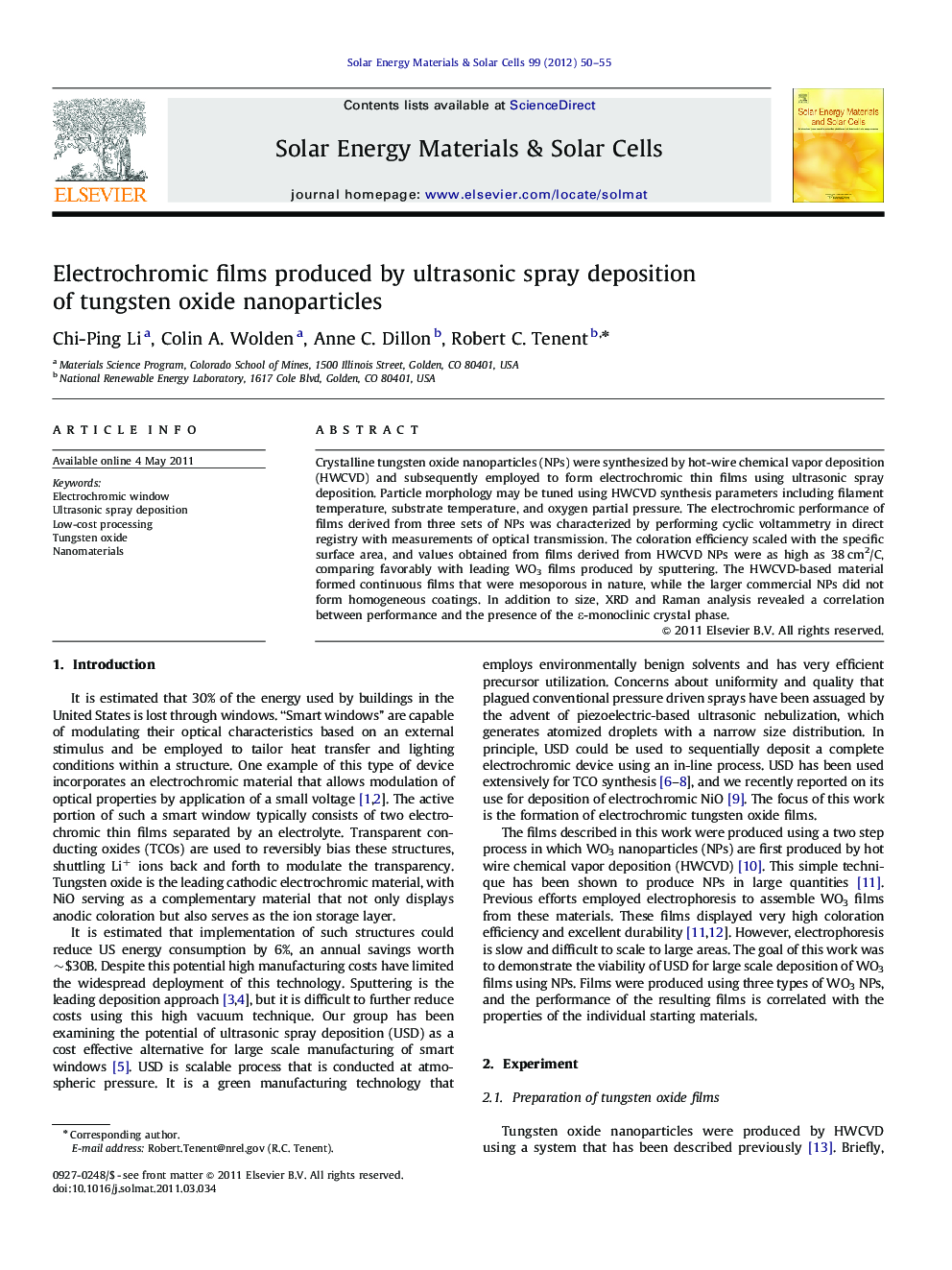| Article ID | Journal | Published Year | Pages | File Type |
|---|---|---|---|---|
| 78996 | Solar Energy Materials and Solar Cells | 2012 | 6 Pages |
Crystalline tungsten oxide nanoparticles (NPs) were synthesized by hot-wire chemical vapor deposition (HWCVD) and subsequently employed to form electrochromic thin films using ultrasonic spray deposition. Particle morphology may be tuned using HWCVD synthesis parameters including filament temperature, substrate temperature, and oxygen partial pressure. The electrochromic performance of films derived from three sets of NPs was characterized by performing cyclic voltammetry in direct registry with measurements of optical transmission. The coloration efficiency scaled with the specific surface area, and values obtained from films derived from HWCVD NPs were as high as 38 cm2/C, comparing favorably with leading WO3 films produced by sputtering. The HWCVD-based material formed continuous films that were mesoporous in nature, while the larger commercial NPs did not form homogeneous coatings. In addition to size, XRD and Raman analysis revealed a correlation between performance and the presence of the ε-monoclinic crystal phase.
Graphical abstractFigure optionsDownload full-size imageDownload as PowerPoint slideHighlights► Development of a scalable, inexpensive deposition process for electrochromic tungsten oxide. ► Electrochromic performance modulated by nanomaterials size and morphology. ► Dramatic electrochromic performance improvement over commercially available materials.
